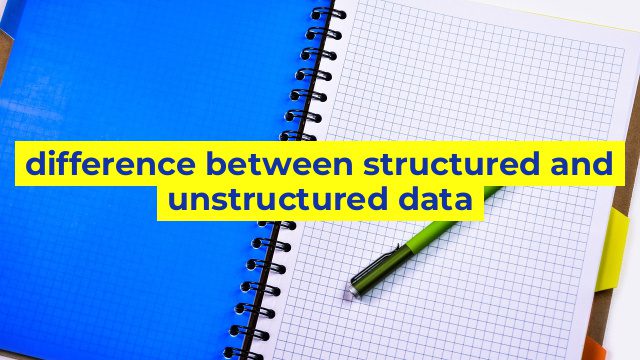The Difference Between Structured and Unstructured Data: An SEO Perspective
What is Structured Data?
Structured data refers to information that is organized in a specific way, making it easy to manage, search for, and analyze. This type of data is highly organized and is typically stored in rows and columns, making it easy to integrate and understand.
Structured data is the foundation of most databases and is used by businesses to store information about customers, purchases, and other relevant data. This information is then used to make decisions about products, marketing, and other areas of the business.
What is Unstructured Data?
Unstructured data refers to information that has not been organized in a specific way. This type of data can include things like text documents, social media posts, and images. Unstructured data is not easy to analyze because it lacks the organizational structure of structured data.
In recent years, unstructured data has become an increasingly important part of SEO because it includes the content on websites, including blog posts and other forms of content. This type of data can help businesses rank higher in search engine results, but it requires a different approach to analysis and management.
The Importance of Structured and Unstructured Data for SEO
Both structured and unstructured data play important roles in SEO. Structured data allows businesses to organize information in a way that is easily understood and analyzed by search engines. This can result in higher rankings and more organic traffic.
Unstructured data, on the other hand, includes the content on websites, which is an essential part of SEO. This type of data can help businesses rank higher in search engine results, but it requires a different approach to analysis and management.
For example, content optimization is an important part of SEO because it helps search engines understand what a website is about. This includes the use of keywords, meta descriptions, and structured content formats such as headings, lists, and tables.
Conclusion
In conclusion, structured and unstructured data are both important aspects of SEO. Structured data is organized in a specific way, making it easy to manage and analyze, while unstructured data includes the content on websites, which is an essential part of SEO. Both types of data require different approaches to analysis and management, but they can be used together to optimize a website for search engines and improve its rankings.
Table difference between structured and unstructured data
| Structured Data | Unstructured Data |
|---|---|
| Structured data is highly organized and follows a strict format or structure, making it easy to search, access, and analyze. | Unstructured data has no predefined structure or format and may come in various forms such as text, images, audio, and video. |
| It is typically found in traditional databases and spreadsheets, and is often used in business applications such as CRM software, inventory system, and financial management tools. | The most common source of unstructured data is the internet, where it exists in the form of web pages, social media posts, emails, and multimedia content. |
| Structured data is ideal for performing statistical analysis, generating reports, and making data-driven decisions. | Unstructured data requires specialized tools and techniques, such as natural language processing and machine learning, to extract meaningful insights from the data. |
| Structured data is precise and accurate. | Unstructured data may contain errors, inconsistencies, and duplications due to its diverse nature and lack of structure. |
| Examples of structured data include customer names and addresses, product descriptions, sales transactions, and financial statements. | Examples of unstructured data include social media posts, blog articles, emails, audio transcripts, and video content. |

